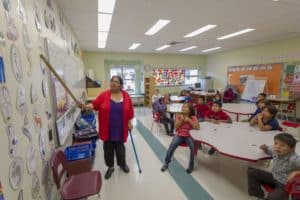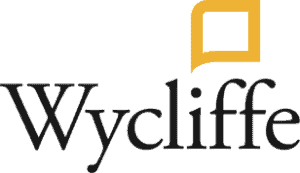Across Canada, indigenous peoples are struggling to save their languages. In many communities, it is only the older people who speak their mother tongues relatively fluently.
This situation exists for several reasons. Over most of the 20th Century, the federal government undermined use of indigenous languages by removing 150,000 Aboriginal children from their families and putting them in residential schools, where abuse was all too prevalent and mother tongues were banned. In addition, today’s Aboriginal youth are speaking less and less of their languages as they are constantly exposed to English and French through TV and online devices.
Apologetic governments want to help revitalize Aboriginal languages, as a means of reconciliation after their role in the residential school tragedy. Aboriginal communities are increasingly seeing the importance of strengthening their languages for community wholeness, well-being, and reconciliation.

At the Jimmy Sandy Memorial School in “Kawawa,” teacher Lynn Einish drills her second grade students in the Naskapi alphabet. Photo by Alan Hood.
Both can look for inspiration to the Naskapi, an indigenous group of 1,100 living in the community of Kawawachikamach, in northeastern Quebec. For decades, the Naskapi have successfully worked to revitalize and promote their language—with key support from SIL International.
Forty years ago, Naskapi leaders, including visionary chief Joseph Guanish, asked several SIL linguists to help start a foundational grammar and dictionary project for the Naskapi language (which uses syllabics).
SIL’s Bill Jancewicz has been serving as resource linguist since he and his wife Norma Jean joined the community-based Naskapi language and culture development strategy in 1988.
The effort has since grown to include promoting mother-tongue literacy and education, publishing of Naskapi legends and stories, and supporting translation efforts, including Scripture. Naskapi elders and younger parents, like Amanda Swappie, are determined to keep their language alive.
‘“Language is very important because that is our identity, what makes us unique as Naskapi people,” says Swappie, a team language specialist and translator since 2013. “Without it, our culture and traditions would not be the same. This is the main reason I do what I do—to help keep it alive for generations to come.”
“It should be important for children to speak in their mother tongue, because when we lose it, we lose ourselves, our identity, the very core of our beings.”
“We have it [use of Naskapi] going at the school and we’re using it and it’s strong,” stresses Shannon Uniam, a staunch advocate for revitalizing Naskapi who has taught for six years.
“I’m a mother and my community has a Naskapi nation to preserve, and the language and culture to preserve. It’s my duty to keep this going. That’s my community, that’s my life, that’s my language, that’s my culture,” says Uniam. “I tell my kids that all the time.”
Whether it’s students playing math bingo in Naskapi or learning their symbol-based alphabet, mother-tongue classroom instruction is vital for the future of the group, she says.
The language development successes of the Naskapi, in such areas as literacy, education and translation, are getting noticed, says Jancewicz. They have caught the attention of other indigenous leaders, who are dealing with the lingering negative impact of residential schools on their people.
“Community and church leaders from the James Bay Cree (Waskaganish, Quebec), Oji-Cree (Kingfisher Lake, Ontario), Western Swampy Cree (Split Lake, Manitoba) and Mushuau Innu (Natuashish, Labrador) are all aware of the progress made by the Naskapi . . . and in various ways have begun local efforts to create the synergy that has [been] created in Kawawachikamach.”
Source: sil.org
Related content:
Cree Initiative – Wycliffe Canada
Nomads No Longer – Word Alive, Spring 2013

